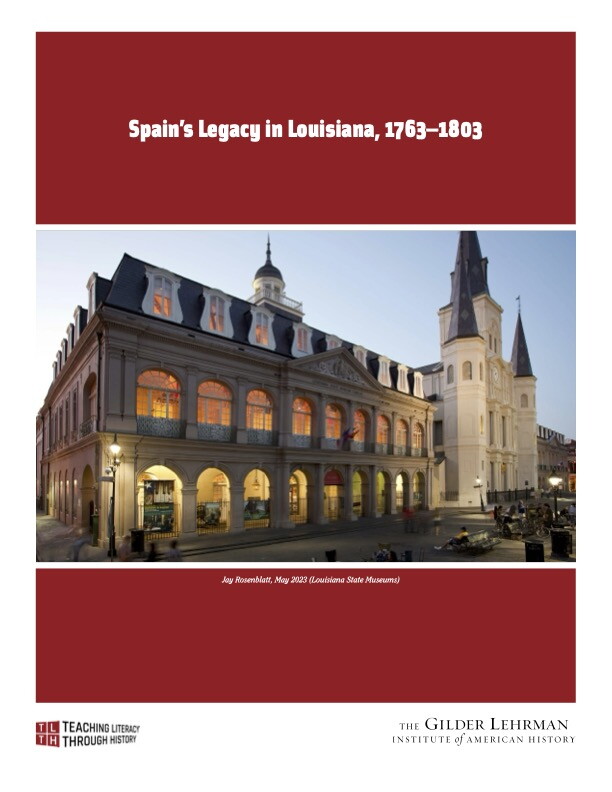Lesson by Maria Miraballes
Essay by Gonzalo M. Quintero Saravia, SJD, PhD
Grade Level: 7–12
Number of Class Periods: 5

The five lessons in this unit explore Spanish influence on the demography, social relations, and culture of New Orleans between 1763 and 1803. Students will read and examine official proclamations, a census population map, portraits, correspondence, architectural images, a folk song, and an oath of allegiance.
Activity sheets are provided in both English and Spanish. A fully translated version of the lesson plan in Spanish will be available soon.
Lesson Plan Author: Maria Miraballes
Historical Background Essay by Gonzalo M. Quintero Saravia, SJD, PhD
CCSS.ELA-LITERACY.SL.8.1: Engage effectively in a range of collaborative discussions (one-on-one, in groups and teacher-led) with diverse partners on topics, texts, and issues, building on others’ ideas and expressing their own clearly.
CCSS.ELA-LITERACY.W.8.1: Write arguments to support claims with clear reasons and relevant evidence.
CCSS.ELA-LITERACY.RH.9-10.2: Determine the central ideas or information of a primary or secondary source’ provide an accurate summary of how key events or ideas develop over the course of a text.
CCSS.ELA-LITERACY.RH.9-10.4: Determine the meaning of words and phrases as they are used in a text, including vocabulary describing political, social or economic aspects of history/social science.
CCSS.ELA-LITERACY.RH.11-12.1: Cite specific textual evidence to support analysis of primary and secondary source, connecting insights gained from specific details to an understanding of the text as a whole.
CCSS.ELA-LITERACY.RH.11-12.2: Integrate and evaluate multiple sources of information presented in diverse formats and media (e.g., visually, quantitatively, as well as in words) in order to address a question or solve a problem.
How many and what types of people lived in eighteenth-century New Orleans?
How did the Spanish government secure its influence over a multicultural society?
What was the cultural legacy of Spanish New Orleans?
Plan of the City of New Orleans and the Adjacent Plantations by Charles Laveau Trudeau and Alexander Debrunner, copy and translation from the original Spanish plan dated 1798
Diagram of the New Orleans Population in 1771
Oath of Allegiance to the King of Spain of the Free Black Militia, September 20, 1769
“Ouarrâ St. Malo,” lyrics transcribed in Creole and translated into English by George Washington Cable in “Creole Slave Songs
Proclamation by Don Alexandre O’Reilly ending Indian slavery in the Province of Louisiana, December 7, 1769
Report on an Insurrection from Henrique Desprez, February 24, 1777
Photograph of the Cabildo and St. Louis Cathedral by Jay Rosenblatt, May 2023
Excerpt from a letter from Bernardo de Gálvez to José de Gálvez, October 16, 1779
Excerpt from a letter between José de Gálvez to Bernardo de Gálvez on Fashion, El Pardo, January 12, 1780
Portrait of Marianne Celeste Dragon by José Francisco Xavier de Salazar y Mendoza, c. 1795
Portrait of Marguerite Amirault Duplessis Alpuente y Ruiz and son Francisco Bonaventure Alpuente y Ruiz by José Francisco Xavier de Salazar y Mendoza, c. 1785–1795
Portrait of Bernardo de Gálvez by José Germán de Alfaro, c. 1785